Pasta Bolognese (often called “ragù alla Bolognese”) is an absolutely delicious pasta dish with a meat ragù sauce that originated in Bologna, Italy. Bologna is a beautiful food city that is a must-visit for foodies. It is much less touristy than many Italian cities, and I would highly recommend visiting for the food scene which was a highlight of our trip to Italy. I was super excited for the opportunity to try the “real” Bolognese sauce from the source, and it did not disappoint. I think I ended up ordering Bolognese in three different dishes on the first day of our visit.
Whenever I see Tagliatelle Bolognese on a restaurant menu, I am always so tempted to order it. When I do, I am sometimes wowed, and other times leave a bit disappointed. In a way, it’s like ordering a roast chicken at a restaurant: a good way to judge the chef.
Bolognese is traditionally served with tagliatelle pasta noodles, which are long, wide and do an excellent job at attracting the thick sauce. You can make the pasta fresh at home, or store-bought pasta will work just fine (but honestly just isn’t quite the same). Any wide, flat pasta noodles such as pappardelle or fettuccine can be used if you don’t specifically have tagliatelle. Bolognese is also very often used as the meat sauce for lasagne.
Bolognese is truly a meat lovers sauce and is not really a “tomato” sauce. Tomatoes are a big part of it, but they are primarily to add liquid and some acidity for balance. While this really is an “easy bolognese” recipe, it isn’t necessarily a weeknight or quick recipe. However, you can make it ahead, and it’s even better the next day. I would recommend doubling or quadrupling the recipe so you can freeze it for quick and amazing meals later.
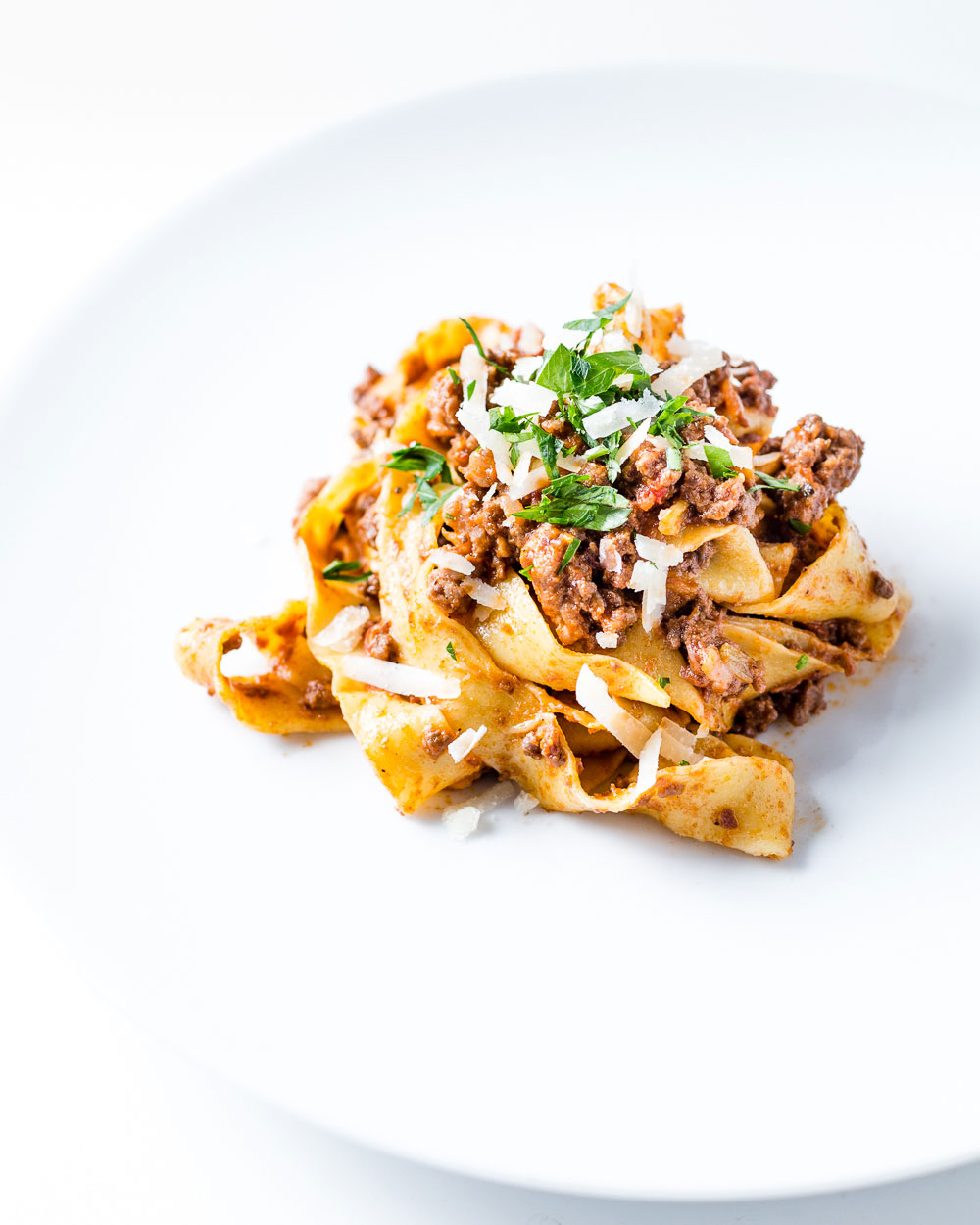
This version is fairly traditional (depending on who you ask). When all of the ingredients are combined and cooked slowly, magic happens. The end result should be a thick sauce, not runny or watery. Along with using the sauce on pasta, it also works perfectly for lasagna, over eggplant, with fried risotto balls and so many other possibilities.
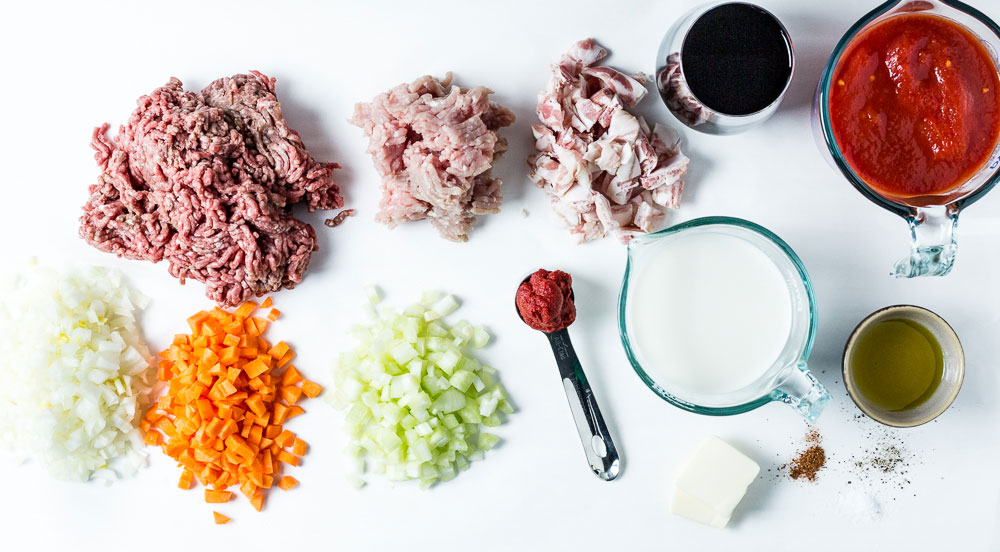
The Ingredients
The bolognese sauce ingredients are all easy to source and there’s nothing exotic that you have to worry about. Like always, high-quality ingredients make a difference in the end result.
Along with kosher salt and freshly ground pepper, the basic ingredients are onion, carrot, celery, two parts ground beef to one part ground pork, pancetta (Italian unsmoked bacon), tomato paste, dry red wine, whole milk, nutmeg and canned tomatoes. A little butter is swirled in at the end, and of course, freshly grated Parmigiano-Reggiano cheese goes on top.
Protein Substitutions: If you are a pescatarian, you can make a fish version with Moon Fish to make Opah Bolognese, and it is equally as delicious. Or make it with leftover brisket ragu or pulled pork. I haven’t tried yet, but it should also work great with ground tuna (like for these sicilian tuna meatballs).
How to Make Bolognese
Step-by-step directions for ragù alla Bolognese.
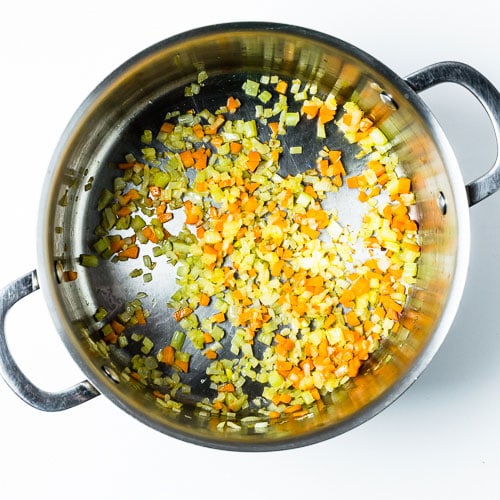
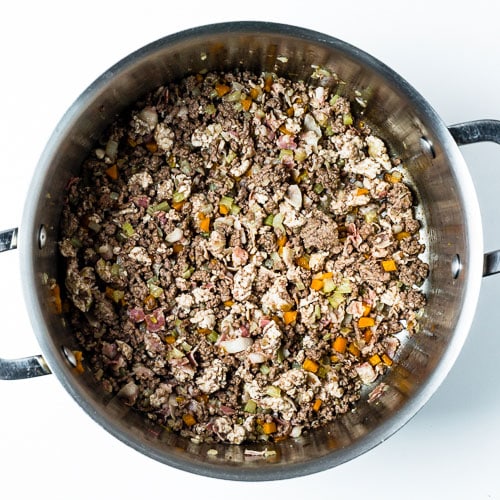
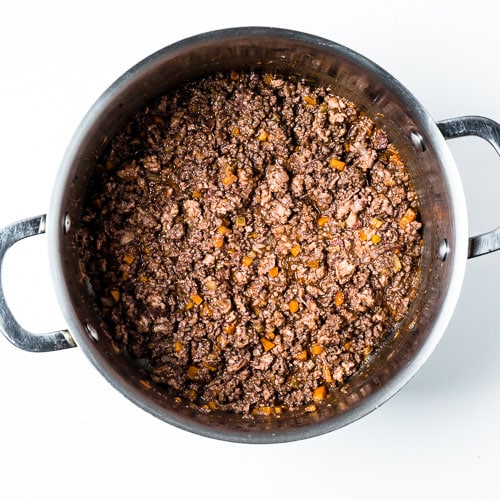

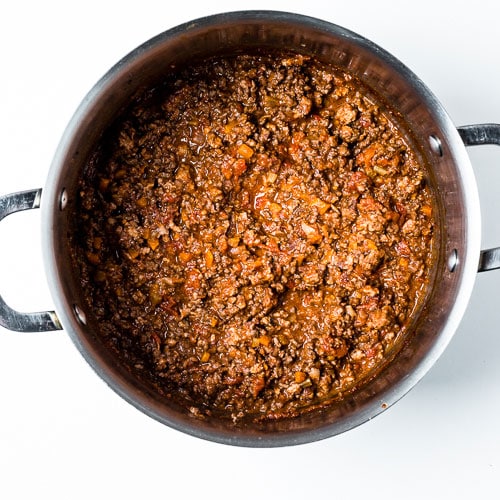
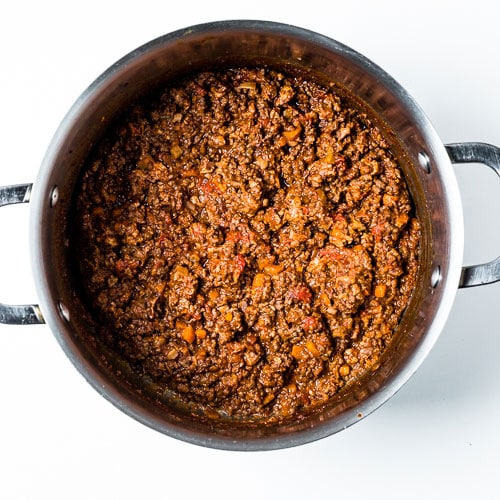
- Cook the aromatic vegetables over medium heat until soft.
- Add the meat and brown over high heat.
- In steps, add and cook down the red wine, milk, and tomato paste; all over medium heat.
- Add the canned tomatoes.
- Slowly cook the sauce down over very low heat.
- It’s finished after 2 to 3 hours. You can add some chicken stock if it gets too dry.
- Add in the al-dente pasta, adding some of the pasta water if it’s too thick.
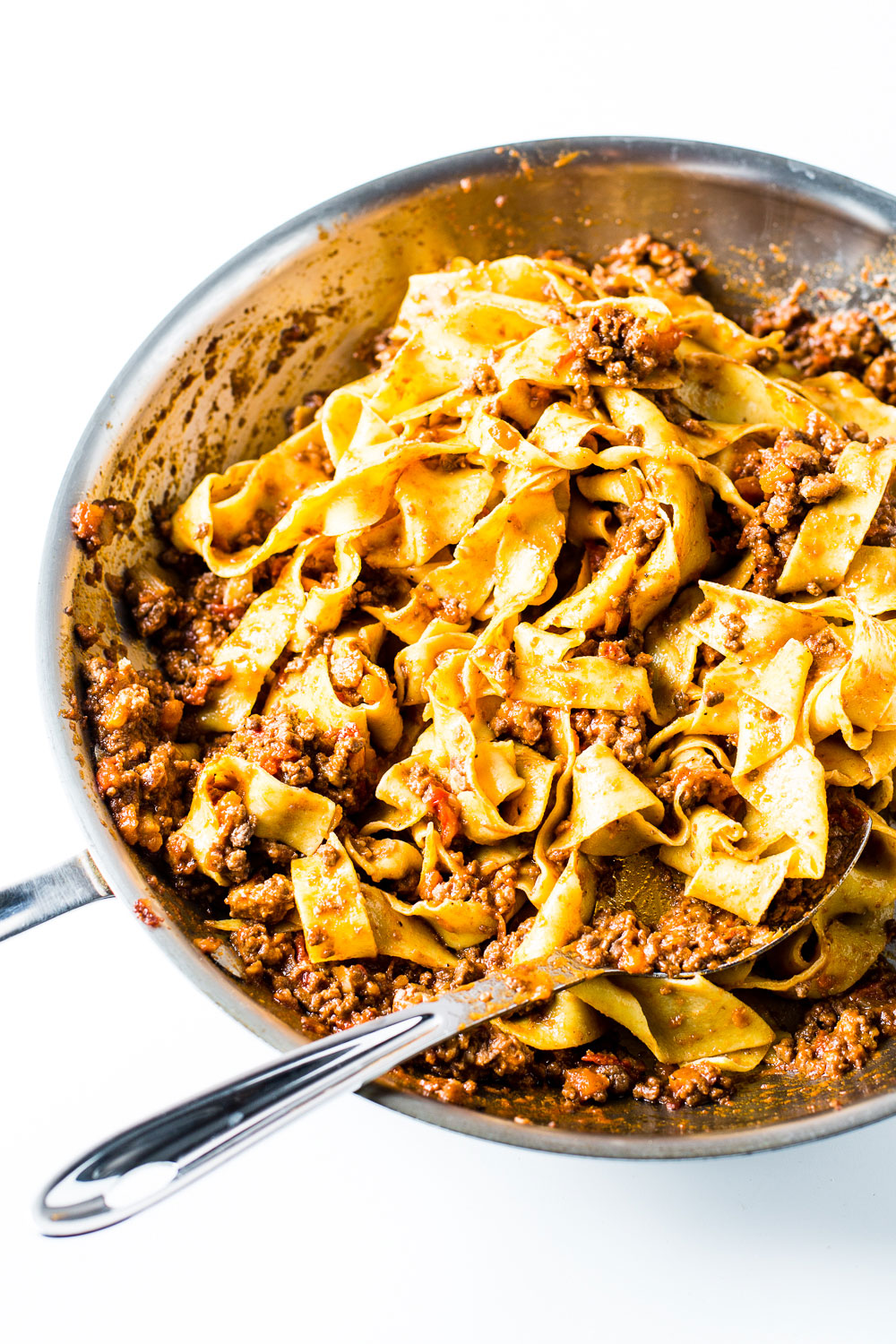
More Delicious Pasta Recipes
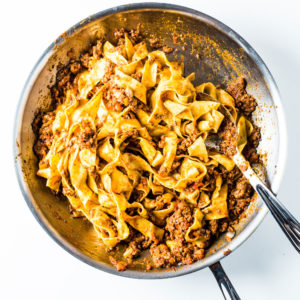
Pasta Bolognese
Ingredients
- 12 oz tagliatelle pasta
- 2 tbsp olive oil
- 1 onion finely chopped
- 1 celery stalk finely chopped
- 1 carrot peeled and finely chopped
- 12 oz ground beef 20% fat
- 6 oz ground pork
- 3 oz pancetta diced
- 2 tbsp tomato paste
- 1 cup dry red wine
- 1 cup milk
- 1/4 tsp ground nutmeg
- 1 14 oz can crushed San Marzano tomatoes
- kosher salt and freshly ground pepper
- 3 tbsp unsalted butter
- parmigiano-reggiano cheese grated
Instructions
- Heat olive oil in a large heavy bottom pot over medium heat. Add onions, celery, carrot, and a pinch of salt. Sauté until translucent and soft but not browned, about 8 minutes.
- Increase the heat to medium-high and add the beef, pork and pancetta. Season with salt and freshly ground pepper and break up with the back of a wooden spoon and cook until browned.
- Add the wine and reduce heat to medium, cook down until the wine is almost completely evaporated.
- Add the milk and cook down until almost completely evaporated. Stir in the ground nutmeg.
- Add tomato paste and cook 2 to 3 minutes.
- Add the tomatoes.
- When it starts to bubble, turn the heat down to very low and cook uncovered for 2 to 3 hours. Stir every once in a while.* If the sauce gets dry at any point, add chicken stock, 1/2 cup at a time.
- Once the liquid has reduced and sauce is thick; season well with salt & pepper, then set aside or refrigerate.
- When ready to eat, add the sauce to a 12” skillet and warm through. Swirl in 3 tablespoons butter.
- Cook the pasta al dente (with plenty of salt in the water), reserving 1/2 cup of the water); then add the pasta to the skillet with the sauce. Gently stir to combine and cook for about 3 more minutes with the sauce, adding reserved pasta water if is too thick.
- Serve with plenty of freshly grated parmesa-reggiano cheese.

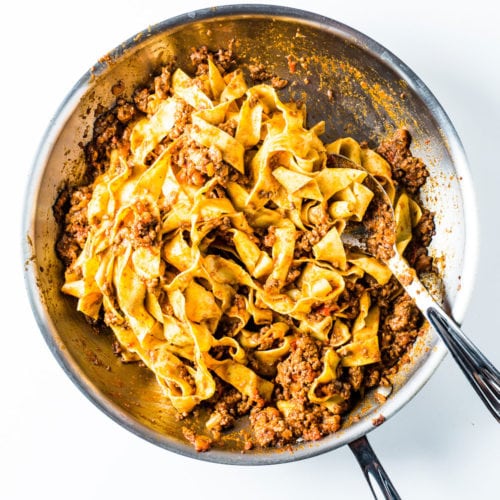
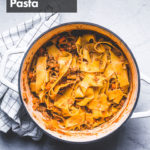
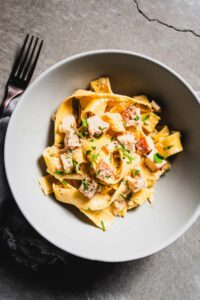
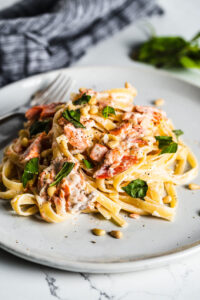
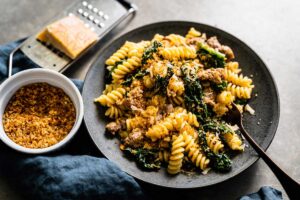
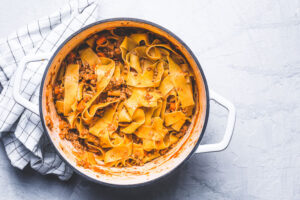
Surprisingly no garlic
Hey Dan!
Bolognese traditionally doesn’t contain garlic, but of course, you can add it if you want to. I would add it after the onions.
Cheers,
Justin